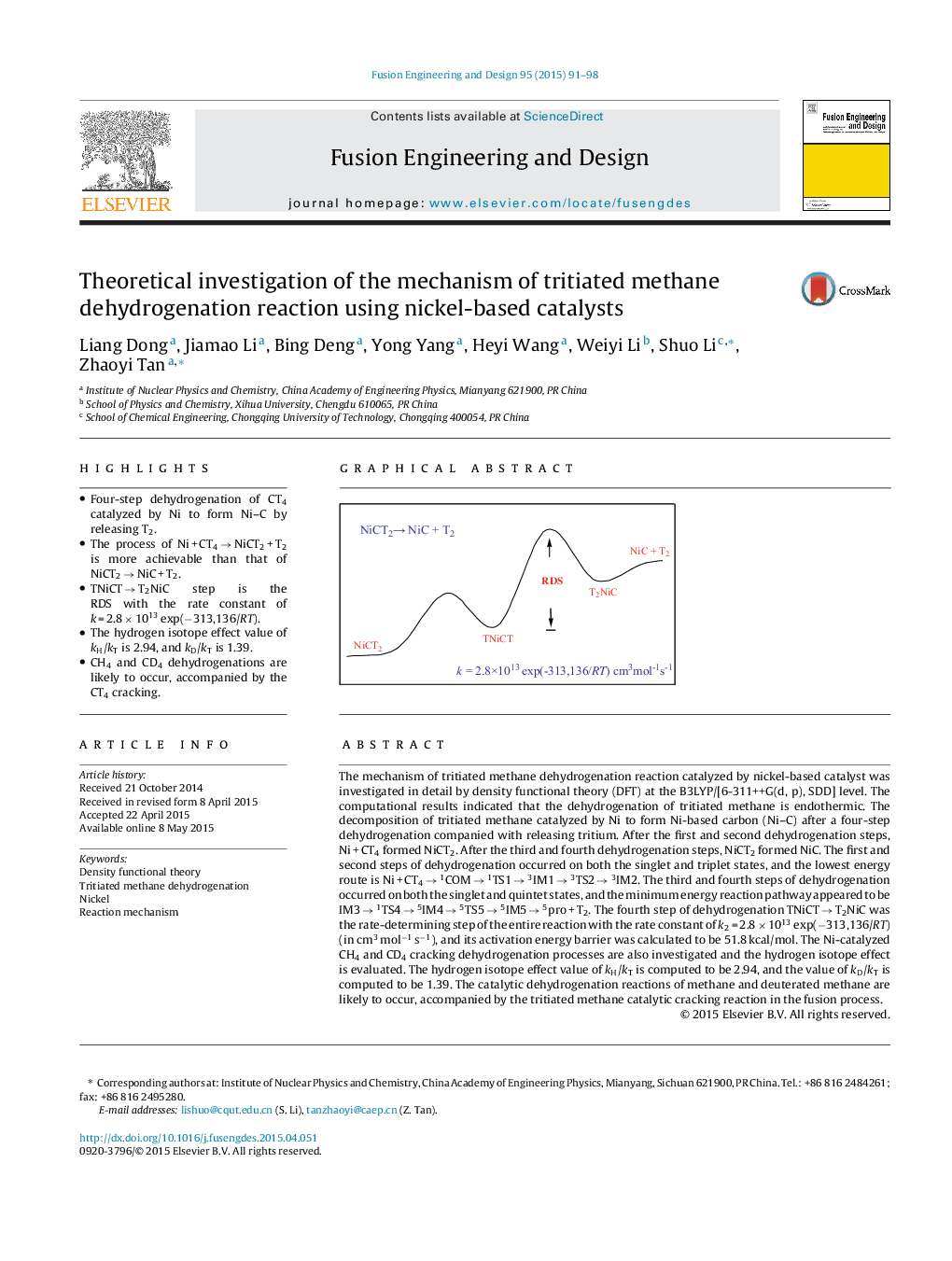| کد مقاله | کد نشریه | سال انتشار | مقاله انگلیسی | نسخه تمام متن |
|---|---|---|---|---|
| 270978 | 504979 | 2015 | 8 صفحه PDF | دانلود رایگان |
• Four-step dehydrogenation of CT4 catalyzed by Ni to form Ni–C by releasing T2.
• The process of Ni + CT4 → NiCT2 + T2 is more achievable than that of NiCT2 → NiC + T2.
• TNiCT → T2NiC step is the RDS with the rate constant of k = 2.8 × 1013 exp(−313,136/RT).
• The hydrogen isotope effect value of kH/kT is 2.94, and kD/kT is 1.39.
• CH4 and CD4 dehydrogenations are likely to occur, accompanied by the CT4 cracking.
The mechanism of tritiated methane dehydrogenation reaction catalyzed by nickel-based catalyst was investigated in detail by density functional theory (DFT) at the B3LYP/[6-311++G(d, p), SDD] level. The computational results indicated that the dehydrogenation of tritiated methane is endothermic. The decomposition of tritiated methane catalyzed by Ni to form Ni-based carbon (Ni–C) after a four-step dehydrogenation companied with releasing tritium. After the first and second dehydrogenation steps, Ni + CT4 formed NiCT2. After the third and fourth dehydrogenation steps, NiCT2 formed NiC. The first and second steps of dehydrogenation occurred on both the singlet and triplet states, and the lowest energy route is Ni + CT4 → 1COM → 1TS1 → 3IM1 → 3TS2 → 3IM2. The third and fourth steps of dehydrogenation occurred on both the singlet and quintet states, and the minimum energy reaction pathway appeared to be IM3 → 1TS4 → 5IM4 → 5TS5 → 5IM5 → 5pro + T2. The fourth step of dehydrogenation TNiCT → T2NiC was the rate-determining step of the entire reaction with the rate constant of k2 = 2.8 × 1013 exp(−313,136/RT) (in cm3 mol−1 s−1), and its activation energy barrier was calculated to be 51.8 kcal/mol. The Ni-catalyzed CH4 and CD4 cracking dehydrogenation processes are also investigated and the hydrogen isotope effect is evaluated. The hydrogen isotope effect value of kH/kT is computed to be 2.94, and the value of kD/kT is computed to be 1.39. The catalytic dehydrogenation reactions of methane and deuterated methane are likely to occur, accompanied by the tritiated methane catalytic cracking reaction in the fusion process.
Figure optionsDownload as PowerPoint slide
Journal: Fusion Engineering and Design - Volume 95, June 2015, Pages 91–98
